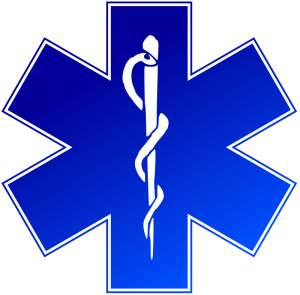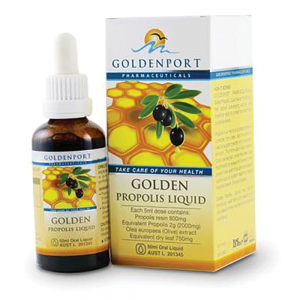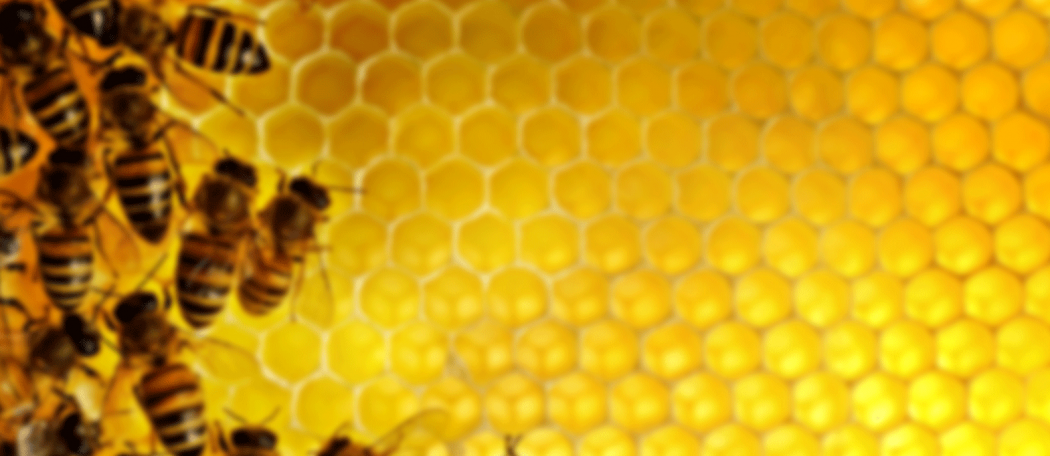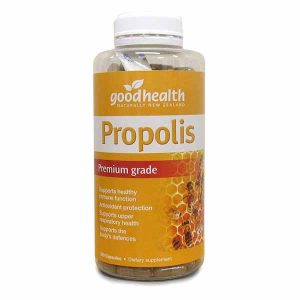By: Ross Conrad
In last month’s Bee Culture article we looked at the origins of propolis; how it is produced and used by honey bees; and how beekeepers can harvest and process propolis into various medicinal forms for market. This month we’ll explore the potent medicinal properties of this product from the hive that is among the most powerful antimicrobial compounds found in nature. Also included is just a small sampling of references to scientific research that backs up many of the medicinal and therapeutic claims made with regard to propolis.
Use of propolis for healing and health by humans has a long history, predated only by the discovery of honey. Propolis is one of the few natural products that has maintained popularity for a long time, although it is not considered a therapeutic agent by the conventional allopathic medical establishment.

While the use of propolis for healing and health is considered alternative, it does not require you to turn your back on modern medicine. Propolis can be used in conjunction with modern medical treatments for a synergistic effect that is better than either the modern treatment or propolis alone.
Throughout their 6,000 year civilization, the Egyptians used propolis medicinally as well as for the mummification of cadavers. The ancient Greeks used propolis to speed up the healing of wounds and Aristotle recommended it for all afflictions of the skin. The Roman legionnaires reportedly carried small amounts of propolis with them into battle, not only to help speed up wound healing but for its analgesic (numbing) properties. The Incas used propolis for infections. During the Boer War, the British used it to keep wounds from becoming infected. Throughout history, propolis has played an important role in veterinary medicine since many of the human uses for propolis are applicable to animals.
Unlike some anti-microbial compounds, propolis exhibits strong antimicrobial activity against both gram positive and gram negative bacteria and fungi. (Melliou 2004, Grange 1990) This may be why propolis is reported to have been identified as one of the ingredients in the wood finish of Stradivarius violins built in the 17th and 18th century. Today the evidence suggests that the activity of propolis against microorganisms appears to be more related to the synergistic effect of flavonoids (and other compounds) than to any individual compound that may be extracted from propolis. This is probably why modern medicine does not take advantage of the benefits of propolis: it is a natural product available inexpensively to anyone with access to bees, and does not contain a single active ingredient that can be extracted, patented and sold for a lot of money.
Since propolis is composed primarily of tree resins collected by honey bees, the properties and thus medicinal qualities of propolis will vary with the geographic location where honey bee colonies are located. While all propolis has been found to exhibit antibacterial properties, propolis from wet-tropical rain forest-type climates have shown the highest antibacterial activity. (Seidel, 2008) It makes sense that trees growing in hot, wet climates will have the greatest amount and variety of bacteria to fight off and, through evolution, have developed the world’s most powerful antibacterial tree resins to get the job done.
Antifungal
In 2011 propolis was tested with 40 yeast strains of C. albicans, C. glabrata, C. krusei, and Trichosporon spp. (Koç 2011) Propolis inhibited the growth C. albicans, C. glabrata, Trichosporon spp., and Rhodotorula sp. and the most sensitive strain was Rhodotorula spp. The most resistant strain was C. Albicans. When it comes to wound healing, propolis from USA, Australia, and Turkey have all been found to have strong antifungal activity and aid wound healing. (Sonmez 2005)
Anti-viral
Both aqueous and ethanol extracts of propolis have been tested against the herpes virus and results indicate that it may help when used as a topical application against cold sores. (Schnitzler, 2009) Meanwhile studies have indicated that Brazilian propolis possess anti-influenza virus activity and ameliorated influenza symptoms in mice making it a possible candidate for an anti-influenza dietary supplement for humans (Shimizu, 2008). This suggests that propolis may speed the recovery from colds or flu by stimulating the immune system.
Antioxidant Activity
Cell damage can result when oxidation, the chemical reaction known to produce free radicals occurs. Antioxidants inhibit the oxidation of molecules and it turns out that propolis contains some powerful antioxidants. Of three bee products examined in 2009 (propolis, pollen, and royal jelly), propolis exhibited stronger antioxidant activity than even pollen, (Nakajima, 2009) and one component, Caffeic acid phenethyl ester (CAPE), may be responsible for the majority of the antioxidant activity of propolis. (Chen, 2009)
AntiCancer Activity
Research on mice indicates that propolis may be able to help with over 70% of human cancer cases. (Messerli, 2009) Mexican propolis possess a strong antiproliferative activity on cancer cell lines. Alcohol based propolis tincture contains components that may prevent colon cancer. (Ishihara, 2009) Propolis shows promise as a chemotherapeutic agent as well as preventive agent against prostate cancer. (Hernandez 2007, Li 2007)
The use of propolis does not necessarily have to mean the abandonment of conventional chemotherapy or radiation therapy typical of conventional cancer treatment. In fact, it appears that propolis may be beneficial when taken in conjuction with standard cancer treatments, acting synergistically to increase the anti-cancer activity of chemotherapy agents, while at the same time it can help patients with the unpleasant side effects of chemo and radiation therapies. (Orsolić, 2005)
 Synergy with Antibacterial Drugs
Synergy with Antibacterial Drugs
Alcohol based propolis has shown significant antimicrobial activity towards strains of Staphylococcus spp. and S. aureus, including strains of “superbugs” that are resistant to conventional antibiotic treatment. Propolis can also enhance the effects of many antibiotics by acting synergistically with antibiotic treatments to kill more bacteria in unison, than when either antibiotics or propolis are used alone. Among the antibiotics that researchers have shown to have increased antimicrobial effect by acting synergistically with propolis are ampicillin, gentamycin, streptomycin, netilmicin, tetracycline, chloramphenicol, ceftriaxon and vancomycin. [Fernandez (2005), Scazzocchio (2006)]
It is important to note that whenever propolis it taken internally, it will tend to be fully metabolized by the body after eight hours. For best results, it is important to spread out therapeutic dosages and take them three times a day at a minimum. Taking propolis four times a day is preferred (every six hours) if possible.
Dental Benefits
The powerful antimicrobial benefits of propolis make it a potential tool in countering bacteria that effect cavities, gingivitis, and may help prevent infection during root canals or other dental procedures. [(Koru (2007), Hayacibara (2005), Al-Shaher (2004), Duailibe (2007)] Based upon experiments with rabbits, a dose of 0.012 g/kg, propolis is estimated to exhibit anesthetic properties that is three times that of cocaine and 5.2 times higher than procaine (novocaine). (Prokopovitch, 1957) Propolis is applied topically to the treatment area when used as an anesthetic, but may be used both topically and internally when utilized for its antibiotic/antibacterial properties.
Possible Negative Effects
As noted above, propolis is safe to use in combination with allopathic medicine (antibiotics, chemo-therapy, vaccines) and may in some instances, increase the effectiveness of the drugs taken. However, all treatments have potential side effects and while propolis appears to be generally safe and without serious side effects for most people, a small number of folks have expressed sensitivity to this hive product. While propolis sensitivity is rare and generally expresses itself as dermatitis, it quickly resolves itself without long-term impacts once propolis intake is discontinued. In large therapeutic doses, propolis can cause diarrhea for some people.
For more information about the medicinal benefits and uses of propolis or any of the products from the hive, contact the American Apitherapy Society (AAS) http://www.apitherapy.org/contact/.
References:
Al-Shaher, A., et al., (2004) Effect of Propolis on Human Fibroblasts From The Pulp and Periodontal Ligament, Journal of Endodontics; 30(5):359-61
Chen, Y.J., et al., (2009) Caffeic Acid Phenethyl Ester, an Antioxidant From Propolis, Protects Peripheral Blood Mononuclear Cells of Competitive Cyclists Against Hyperthermal Stress, Journal of Food Science; 74(6):H162-7
Duailibe, S.A., Gonçalves, A.G., Ahid, F.J., (2007) Effect of a Propolis Extract on Streptococcus Mutans Counts in Vivo, Journal of Applied Oral Science; 15(5):420-3
Fernandez, J.A., et. al., (2005) Propolis: Anti-Staphylococcus Aureus Activity and Synergism with Antimicrobial Drugs, Memórias do Instituto Oswaldo Cruz; 100(5):563-6. Epub
Grange JM, Davey RW, (1990) Antibacterial properties of propolis (bee glue) Journal of the Royal Society of Medicine; 83:159–160. [PubMed]
Hayacibara, MF., et al., (2005) In Vitro and In Vivo Effects of Isolated Fractions of Brazilian Propolis on Caries Development, Journal of Ethnopharmacology; 101(1-3):110-115
Hernandez, J.A, (2007), Sonoran Propolis: Chemical Composition and Antiproliferative Activity on Cancer Cell Lines, Planta Medica; 73(14):1469-74. [PubMed]
Ishihara, M., (2009) Alcohol based propolis tincture contains components that may prevent colon cancer – Growth Inhibitory Activity of Ethanol Extracts of Chinese and Brazilian Propolis in Four Human Colon Carcinoma Cell Lines, Oncology Reports; 22(2):349-54
Koç, A. N., et al., (2011) Antifungal activity of the honeybee products against Candida spp. and Trichosporon spp, Journal of Medicinal Food, vol. 14, no. 1-2, pp. 128–134.
Koru, O., et al., (2007) In Vitro Antimicrobial Activity of Propolis Samples From Different Geographical Origins Against Certain Oral Pathogens, Anaerobe; 13(3-4):140-5 Epub
Li, H., (2007) Propolis extract had a significant inhibitory effect on the proliferation of human prostate cancer cells. – Antiproliferation of Human Prostate Cancer Cells by Ethanolic Extracts of Brazilian Propolis and its Botanical Origin, International Journal of Oncology; 31(3):601-6
Melliou, E., Chinou, I., (June 2004) Chemical Analysis and Antimicrobial Activity of Greek Propolis, Planta Medica; 70(6):515-19. DOI: 10.1055/s-2004-827150
Messerli, SM, (2009) Artepillin C. (ARC) in Brazilian Green Propolis Selectively Blocks Oncogenic PAK1 Signaling and Suppresses the Growth of NF Tumors in Mice, Phytotherapy Research; 23(3): 423-427
Nakajima, Y, (2009) Comparison of Bee Products Based on Assays of Antioxidant Capacities, BMC Complementary Alternative Medecine; 26:9:4
Orsolić N, Basić I., (2005) Antitumor, Hematostimulative and Radioprotective Action of Water-Soluble Derivative of Propolis (WSDP), Biomedicine Pharmacotherapy; 59(10):561-70
Prokopovich N.N. (1957) Propolis a new anaesthetic, Vrach. Delo 10, 1077–1080 (in Russian).
Scazzocchio, F., et al., (2006) Multifactorial Aspects of Antimicrobial Activity of Propolis, Microbiology Research, 2006; 161(4):327-33.
Schnitzler, P., et al., (2009) Antiviral Activity and Mode of Action of Propolis Extracts and Selected Compounds, Phytotherapy Research, (http://Pubmed.gov)
Seidel, V., et al., (September 2008) Comparative Study of the Antibacterial Activity of Propolis From Different Geographical and Climatic Zones, Phytotherapy Research; 22(9):1256-63. doi: 10.1002/ptr.2480
Shimizu, T., et al., (2008) Anti-Influenza Virus Activity of Propolis in Vitro and its Efficacy Against Influenza Infection in Mice, Antiviral Chemistry and Chemotherapy; 19(1):7-13
Sonmez, S., et. Al., (2005) The effect of Bee Propolis on Oral Pathogens and Human Gingival Fibroblasts, Journal of Ethnopharmacology,; 102(3):371-6. Epub DOI:10.1016/j.jep.2005.06.035
Ross Conrad is the author of Natural Beekeeping: Organic Approaches to Modern Apiculture, 2nd Edition.









